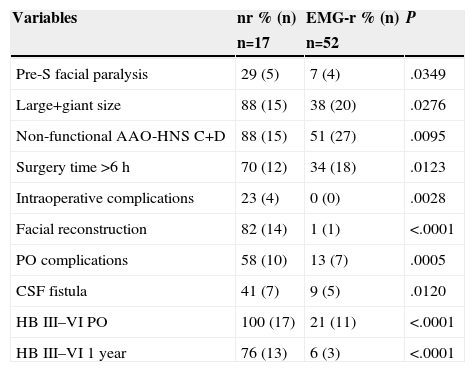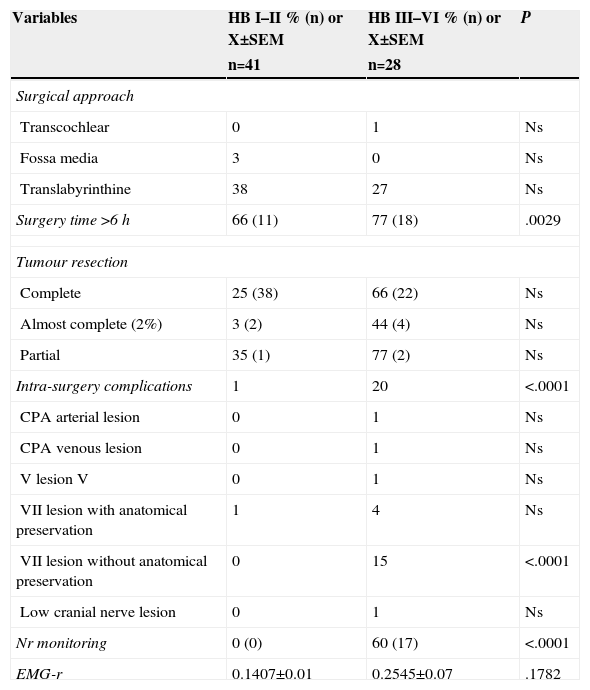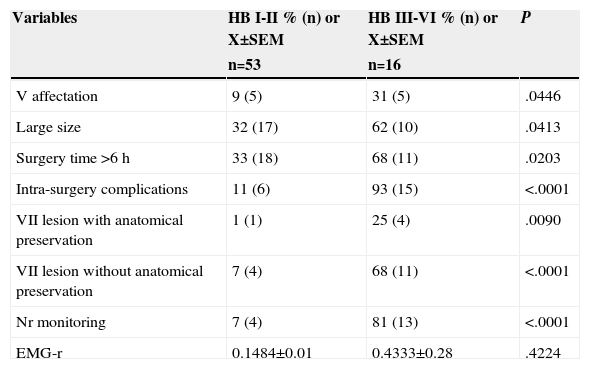Facial nerve monitoring is fundamental in the preservation of the facial nerve in vestibular schwannoma surgery. Our objective was to analyse the usefulness of facial nerve monitoring under partial neuromuscular blockade.
MethodsThis was a retrospective analysis of 69 patients operated in a tertiary hospital.
ResultsWe monitored 100% of the cases. In 75% of the cases, we could measure an electromyographic response after tumour resection. In 17 cases, there was an absence of electromyographic response. Fifteen of them had an anatomic lesion with loss of continuity of the facial nerve and, in 2 cases, there was a lesion with preservation of the nerve. Preoperative facial palsy (29% 7%; P=.0349), large tumour size (88 vs 38%; P=.0276), and a non-functional audition (88 vs 51%; P=.0276) were significantly related with an absence of electromyographic response.
ConclusionsFacial nerve monitoring under neuromuscular blockade is possible and safe in patients without previous facial palsy. If the patient had an electromyographic response after tumour excision, they developed better facial function in the postoperative period and after a year of follow up.
La monitorización del nervio facial es fundamental en la preservación del nervio facial en la cirugía del schwannoma del nervio vestibular. Nuestro objetivo es analizar la utilidad de la monitorización facial bajo bloqueo neuromuscular parcial.
MétodosAnálisis retrospectivo de 69 pacientes operados en un hospital de nivel terciario.
ResultadosEn el 100% de los casos se pudo realizar monitorización electromiográfica. Se obtuvo respuesta electromiográfica tras la escisión tumoral en el 75% de los casos. En 17 casos no hubo respuesta electromiográfica. En 15 hubo lesión de continuidad del nervio facial y en 2 hubo lesión pero se logró mantener la continuidad anatómica del nervio. La presencia de parálisis facial preoperatoria (29 vs. 7%; p=0,0349), el mayor tamaño tumoral (88 vs. 38%; p=0,0276) y una audición no funcional (88 vs. 51%; p=0,0276) son factores significativamente más prevalentes en el grupo en que no se pudo obtener una respuesta electromiográfica.
ConclusionesLa monitorización del nervio facial bajo bloqueo neuromuscular moderado es factible y segura en pacientes sin lesión facial preoperatoria. Los pacientes que obtienen respuesta electromiográfica tras la extirpación del tumour tienen mejor función facial en el postoperatorio y al año de seguimiento.













